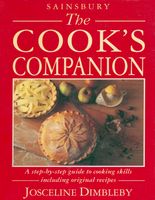Advertisement
Basic Bread Techniques
Appears in
Published 1991
Most breads are made by adding yeast and liquid to flour to make a dough, which is then kneaded, left to rise, shaped, left to rise again and baked. Breads are easy to make but it is important to use the correct amounts of ingredients and you need time. Most yeasts do not like to be rushed!
Other important ingredients in bread-making are sugar, salt, fat and liquid. Sugar is the food yeast needs to make it grow. Fresh yeast can find enough natural sugar in the flour for fermentation but conventional dried yeast needs a little sugar added, when reconstituting, to activate it. Salt is an essential ingredient as it not only improves the bread’s flavour but also strengthens wheat’s gluten and prevents the yeast from rising too quickly. Fat, in the form of butter, margarine, lard or oil, is not essential but it pro duces a moister bread which keeps for longer. Too much sugar, salt and fat slows yeast down. Finally, the liquid used can be water or milk, or a mixture of both, and the amount used varies according to the flour’s absorbency. The liquid should be added at a hand-hot temperature of 38°C (100°F). If it is too hot, the yeast will be killed.

